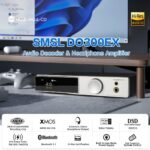Hey there! Have you ever wondered about the world of audio drivers and how they work? Well, in this article, we will explore content and dynamic drivers. If you’re curious about the differences between these two types of drivers or want to learn more about them, you’re in the right place!
Now, if you need clarification on content and dynamic drivers, don’t worry! We’ll break it down for you in detail. By the end of this article, you’ll clearly understand their functionalities, strengths, and weaknesses. So, whether you’re an audio enthusiast or someone who loves to delve into the technicalities of sound technology, this article will satisfy your curiosity. Stay tuned, and get ready to dive deeper into the world of content and dynamic drivers!
Introduction
In the world of audio technology, drivers play a crucial role in producing high-quality sound. These tiny components are responsible for converting electrical signals into sound waves, allowing us to enjoy music, movies, and other forms of audio. Among the various types of drivers available, static drivers and dynamic drivers are the most commonly used. This article will explore what stagnant and emotional drivers are, how they work, their advantages and disadvantages, and their applications in various audio devices. By the end, you will better understand these two types of drivers and which one might be right for you.
What are Static Drivers?
Definition of Static Drivers
Static or balanced-armature drivers are small electromechanical devices used in audio equipment to generate sound. Unlike dynamic drivers, stationary drivers operate based on the principle of balanced armature, where a magnetic field is balanced by a coil suspended between two magnets. This configuration allows static drivers to produce precise and detailed sound reproduction.
How Static Drivers Work
Static drivers consist of a diaphragm, a coil, and magnets. When an electrical signal is applied to the ring, it creates an electromagnetic field interacting with the interests. This interaction causes the coil to vibrate, which moves the diaphragm. As a result, sound waves are generated and transmitted to the listener’s ears.
Advantages of Static Drivers
Static drivers offer several advantages over dynamic drivers. Firstly, they are known for their accuracy and clarity in reproducing sound. This makes them ideal for audio professionals or enthusiasts who require precise sound reproduction. Secondly, static drivers are more efficient in converting electrical signals into sound waves, resulting in better energy efficiency. Lastly, stationary drivers are smaller and more lightweight than dynamic drivers, making them popular for compact audio devices.
Disadvantages of Static Drivers
Despite their advantages, static drivers also have some limitations. One major drawback is their limited frequency response range. Stationary drivers tend to excel in the mid and high-frequency fields but may struggle to reproduce deep bass frequencies. Additionally, static drivers are generally more expensive than dynamic drivers, making them less accessible for casual users or those on a budget.
What are Dynamic Drivers?
Definition of Dynamic Drivers
Dynamic drivers, also known as moving-coil drivers, are the most common drivers found in audio devices. They use a diaphragm attached to a coil, which moves within a magnetic field to generate sound.
How Dynamic Drivers Work
Dynamic drivers consist of a diaphragm attached to a voice coil suspended within a magnetic field. When an electrical signal is applied to the voice coil, it creates an electromagnetic force that moves the ring and the attached diaphragm. As a result, sound waves are produced and transmitted to the listener.
Advantages of Dynamic Drivers
Dynamic drivers offer several advantages that make them widely used in audio devices. Firstly, they have a more comprehensive frequency response range than static drivers, allowing for better reproduction of bass frequencies. Secondly, dynamic drivers are generally more affordable, making them accessible to a broader range of users. Lastly, passionate drivers are known for their durability and can withstand high power levels without distortion, making them suitable for high-performance audio applications.
Disadvantages of Dynamic Drivers
While dynamic drivers have their advantages, they also have certain limitations. One limitation is their lower efficiency compared to static drivers. Active drivers require more power to produce the same sound level as stationary drivers, making them less energy efficient. Additionally, dynamic drivers are generally larger and heavier than static drivers, which may limit their use in compact audio devices.
Comparison between Static and Dynamic Drivers
Sound Quality
When it comes to sound quality, both static and dynamic drivers have their strengths. Stationary drivers are often praised for their accuracy and clarity, especially in the mid and high-frequency ranges. On the other hand, dynamic drivers excel in reproducing deep bass frequencies, providing a more immersive listening experience. Ultimately, the choice between static and dynamic drivers for sound quality depends on personal preferences and the intended use.
Frequency Response
Frequency response refers to the range of frequencies a driver can reproduce. Static drivers typically have a narrower frequency response range, focusing on mid and high frequencies. In contrast, dynamic drivers have a more comprehensive frequency response range, including low and high frequencies. If deep bass reproduction is essential to you, active drivers may be the better choice.
Efficiency
Efficiency refers to the electrical power required to produce a particular sound level. Static drivers are generally more efficient than dynamic drivers, meaning they can have the same sound level with less power. This makes them suitable for portable audio devices with limited battery life. On the other hand, active drivers require more power and may drain the battery faster.
Durability
Regarding durability, dynamic drivers are known for their robustness and ability to handle high power levels without distortion. This makes them suitable for demanding applications such as professional audio monitoring or live performances. Although more delicate, static drivers can still be durable if handled with care.
Cost
Cost is another factor to consider when choosing between static and dynamic drivers. Stationary drivers are generally more expensive due to their intricate design and precise sound reproduction capabilities. On the other hand, active drivers are more affordable, making them a popular choice for casual users or those on a budget.
Applications of Static Drivers
Static drivers find applications in various audio devices, including headphones, earphones, and loudspeakers. Due to their accurate and detailed sound reproduction, audio professionals, musicians, and avid music listeners often prefer them. The compact size of static drivers also makes them suitable for in-ear monitoring systems musicians use during live performances.
Applications of Dynamic Drivers
Dynamic drivers are the most commonly used drivers in headphones, earphones, and loudspeakers. Their ability to reproduce deep bass frequencies makes them popular among consumers who enjoy a more immersive listening experience. Dynamic drivers are found in various audio devices, from budget-friendly earphones to high-end studio headphones.
Which Driver is Right for You?
Choosing the correct driver for your audio needs depends on various factors. Considerations such as sound quality preferences, intended use, and budget play a role in decision-making.
Considerations for Choosing a Driver
When choosing between static and dynamic drivers, please consider the type of sound you prefer. If you prioritize accuracy and clarity in mid and high frequencies, stationary drivers may be your better choice. On the other hand, if you enjoy deep bass reproduction and immersive sound, dynamic drivers are a suitable option.
Personal Preferences
Personal preferences also play a significant role in choosing between static and dynamic drivers. Some individuals may prefer a specific type of sound signature, while others prioritize comfort, portability, or brand reputation. I think it’s essential to consider what matters most to you regarding the audio experience.
Intended Use
The intended use of the audio device should also be taken into consideration. Static drivers may be the best choice if you are a professional audio engineer or musician requiring accurate sound reproduction. However, if you are a casual listener or need a pair of headphones for daily use, dynamic drivers are a more practical and affordable option.
Conclusion
In summary, static and dynamic drivers are familiar types in audio devices. Stationary drivers offer precise sound reproduction and energy efficiency, making them ideal for audio professionals and enthusiasts. Active drivers excel in reproducing deep bass frequencies and are more affordable, making them popular among consumers. When choosing between static and emotional drivers, consider sound quality preferences, intended use, and personal preferences. By understanding the differences between these drivers, you can make an informed decision and choose the driver that best suits your audio needs.










